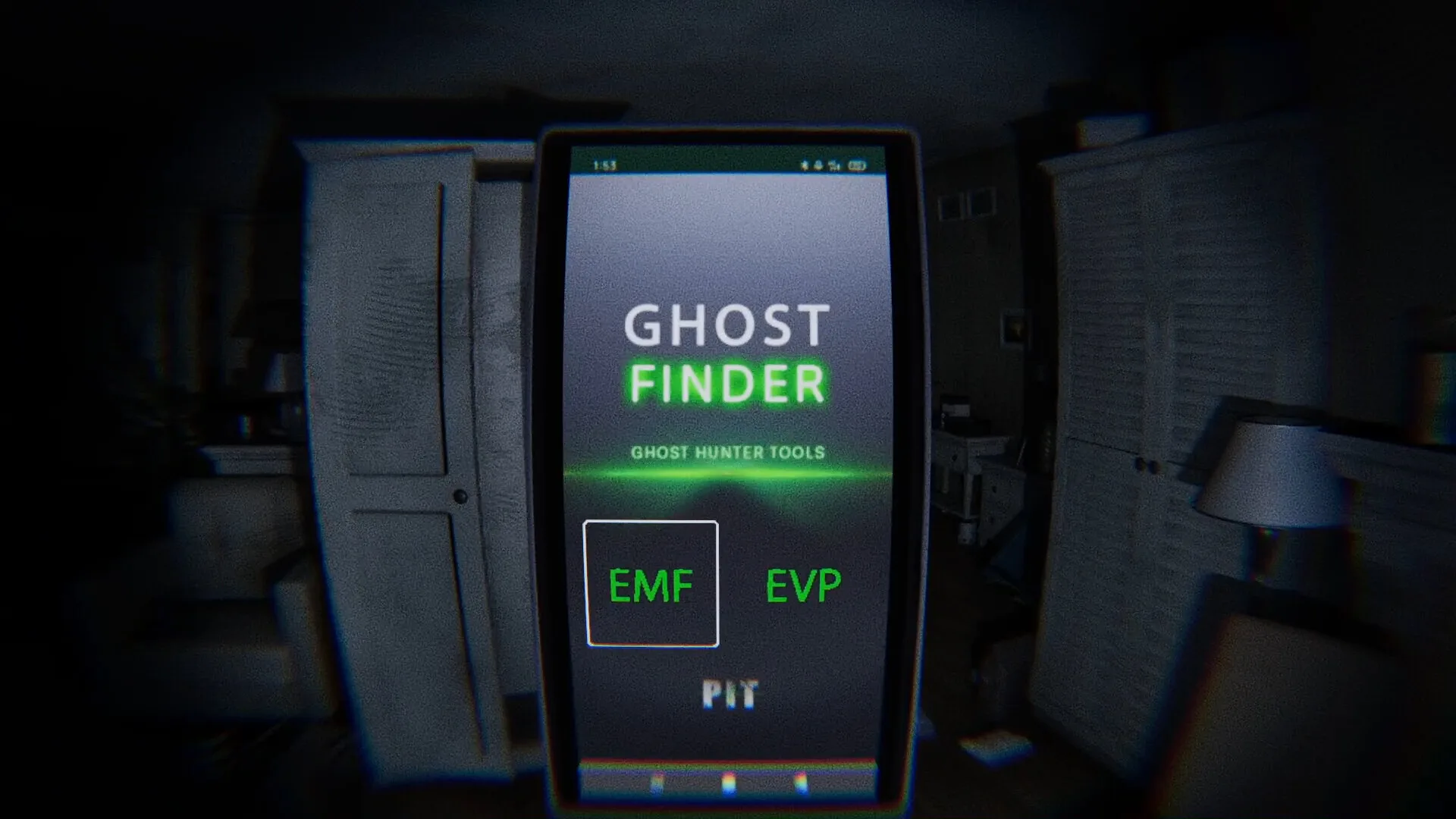The fantasy of the paranormal investigator is a potent one. It involves stepping across a threshold into a place where the rules of the world no longer apply, armed with technology meant to quantify the unquantifiable. Ghost Frequency builds its entire experience on this foundation.
You are Mark, a seasoned member of the Paranormal Investigation Team, entering a derelict home where two colleagues recently vanished. Your only connection to the outside world is your partner, Emily, who guides you via radio from a van parked outside.
The entire game is presented through a gritty bodycam feed, giving every moment a tense, found-footage quality. This is not a game of running or fighting; it is a methodical descent into a quiet, oppressive dread, where the horror is built from subtle clues and the fear of what lurks just beyond the flashlight’s beam.
Tools of the Trade
The gameplay loop in Ghost Frequency is a strictly linear and scripted affair. Guided by Emily’s instructions, you move through the house to perform a series of procedural tasks. The core of this process is your equipment, which is modeled after real-world ghost-hunting gear.
A phone app, based on an actual application from the real PIT, serves as your primary tool. You use it to scan for EMF spikes, identify cold spots, and attempt to capture disembodied voices through EVP recordings.
After identifying a hot spot, you are tasked with setting up cameras for Emily to monitor remotely. Unlike a game such as Phasmophobia, where player freedom and emergent situations are paramount, here the experience is tightly controlled.
The tools are not for defense but for discovery, designed to pull you deeper into the mystery. This feeling of vulnerability is amplified by a simple flashlight with a finite battery. When it dies, you must stumble back to your bag for a replacement, navigating the suffocating darkness with only the tiny flame of a lighter.
An Architecture of Fear
Where the game truly succeeds is in its audio-visual presentation. The bodycam perspective is executed perfectly, with a persistent visual grain and a narrow field of view that feels authentically claustrophobic. In low light, the image quality degrades, smearing the darkness and making it difficult to trust what you are seeing.
But it is the sound design that does the most to create the unnerving atmosphere. The house is a symphony of terrifying noises: the constant creaks of an old structure settling, faint whispers that appear on your EVP recordings, and the sudden clatter of an object falling in another room.
The developers also understand the power of silence, using sudden drops in ambient sound to signal that something is wrong. The house feels less like a location and more like a hostile, breathing entity. This oppressive quiet is punctuated by the voice acting between Mark and Emily, whose professional radio chatter provides a grounded, human counterpoint to the escalating strangeness.
Cracks in the Foundation
For all its atmospheric strengths, the investigation sometimes stumbles. The game’s scripted nature occasionally works against it, with progression tied to specific triggers that are not always obvious. A player can find themselves wandering back and forth through the same rooms, searching for the invisible line they need to cross to advance the narrative.
This can break the pacing and replace carefully built tension with simple frustration. A more significant issue lies with the characterizations of Mark and Emily. Faced with genuinely terrifying phenomena, their reactions are often strangely muted and unemotional. This detachment creates a disconnect, as the player’s own fear is not mirrored by the characters on screen.
The environment can also feel less interactive than it appears; the house is filled with countless cabinets and drawers that can be opened, but nearly all of them are empty, making the world feel like a shallow set piece at times.
An Unfinished Case File
The experience falters most significantly in its final act. The game abandons its successful formula of atmospheric investigation for a frustrating, pitch-black maze. This sequence is a work of pure trial and error, forcing the player to navigate blindly while being hunted.
It strips away the psychological dread in favor of a cheap, repetitive challenge that feels out of place. This leads to an ending that feels sudden and unsatisfying. The game’s runtime is exceptionally short, and the story concludes with very little resolution regarding the fate of the missing investigators or the entity haunting the house.
It feels like a compelling proof-of-concept or the first chapter of a much larger story, building a fantastic foundation but stopping before constructing anything substantial upon it.
The Review
Ghost Frequency
Ghost Frequency is a masterclass in building tension, using its chilling sound design and authentic investigative tools to create a genuinely scary experience. Its phenomenal atmosphere is betrayed by an extremely short runtime and a frustrating final maze that breaks the immersion. It feels like an excellent first act with no second or third, a proof-of-concept that ends abruptly just as it begins to impress. It’s a terrifying but ultimately incomplete case file.
PROS
- Exceptional atmospheric and sound design creates genuine dread.
- Investigative tools feel authentic and enhance immersion.
- Effective and unnerving use of the bodycam perspective.
CONS
- Extremely short playtime.
- The story is abrupt and lacks a resolution.
- A frustrating final maze section feels out of place.
- Progression triggers can be unclear, leading to aimless wandering.
